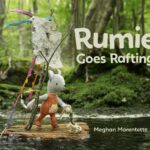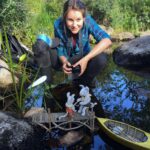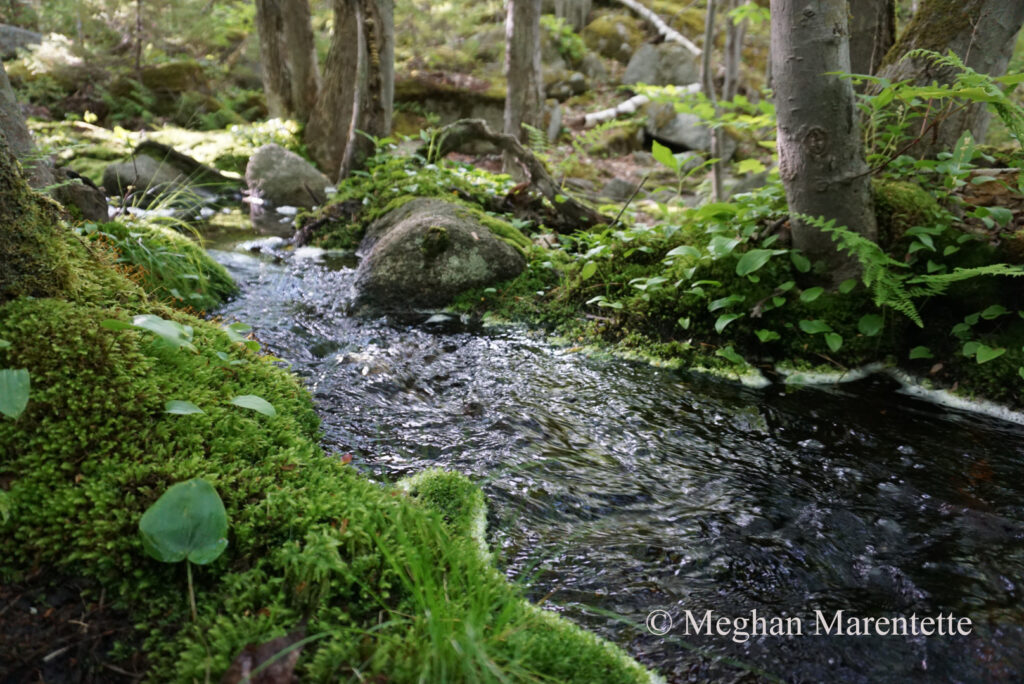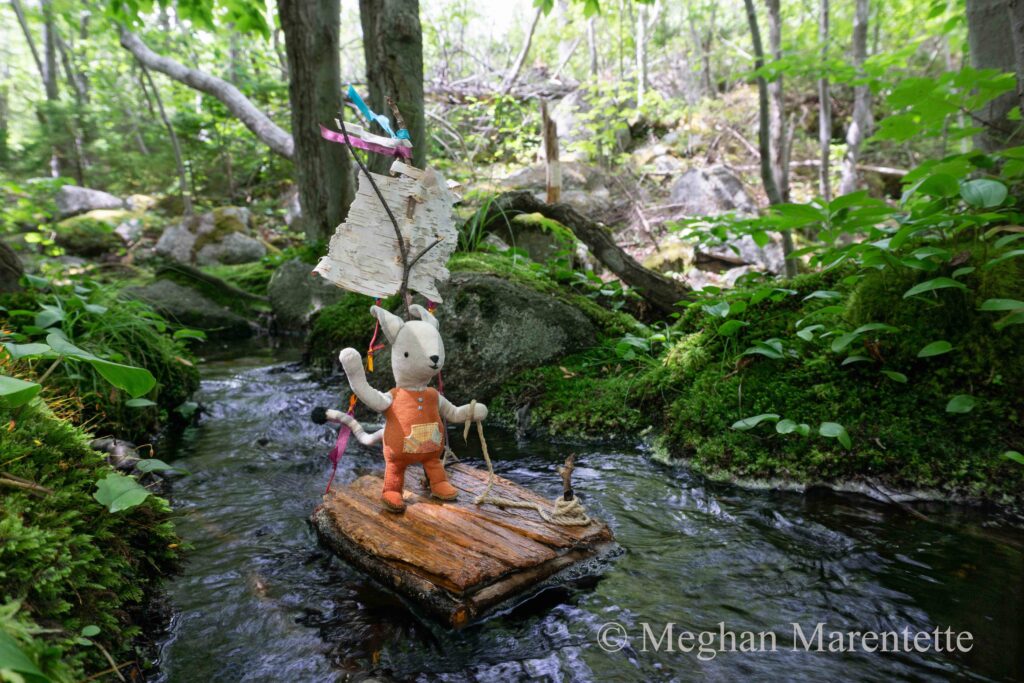Featured artist: Meghan Marentette
31 Jul 2024
Throughout human history, nature has been a profound source of artistic inspiration. In this series, we talk with artists whose work is inspired by, created in, or connected to the brilliant nature in the Nature Trust’s care.
Meghan Marentette is a Nova Scotian author and artist who creates diorama picture books for children. She creates the props from found materials, makes her characters from fabric and wire, and photographs their stories in a natural woodland setting and on interior sets made from fallen trees. Rumie Goes Rafting was published by Owlkids in April 2024.
What drew you toward nature as the backdrop of your storytelling?
I always loved exploring nature as a child, but didn’t realize it was the foundation of my identity and art, until I burned out from working as a costume maker in the film industry, decades later. I’m a quiet person who enjoys slow, creative processes―hence the attraction to sewing―but a chaotic job with constant deadlines felt opposite to me. Seeking peace, I began to wander in the forest again, just as I’d done as a child. It sounds romantic, but I suppose I was on a journey to look for her―that observant young girl who had so much to say, but wasn’t particularly verbal. The more time I spent there―quiet, listening and really present―the more I slowed down to really look at my surroundings. Every leaf, every spore, every bubble in the stream. It was absolutely magical to discover the forest that way! Pretty soon, a tiny creature named Rumie came to mind who wanted to have their story told. Perhaps it was my inner child, returning.
I was not a trained photographer, and it would be an enormous project to craft my vision into reality, but I was determined that the actual forest be my ‘studio’ and backdrop for Rumie Goes Rafting. It’s the place I can be my authentic self and create from my soul. It took five years to complete, but what a lot of fun!
What was it about the Purcells Cove Backlands that inspired you?
The ‘Backlands’ is an incredible swath of undeveloped forest full of native species, with little imprint of humankind. Since the stories I write for Rumie are about the importance of free play in childhood, a natural forest setting like that is ideal. Here, Rumie can be led entirely by their own curiosity to discover their own potential. Though they pick up various bits of litter from humans, there is no knowledge of the constructs of human society, which can be overly limiting at times, for a person of any age! In practical terms, there are no houses visible and it’s quiet enough so I can really focus in on the details to find the best locations. There are multiple streams and ponds to choose from, with low vegetation in the right scale for my characters, and the dappled light under the trees is startlingly beautiful as a natural ‘studio’. I could never build or light a set as well as Mother Nature! I was never more aware that she is my co-creator than the day the photo below was taken―a frog poked its head out of the stream in a perfect spot in the background! Can you find it?
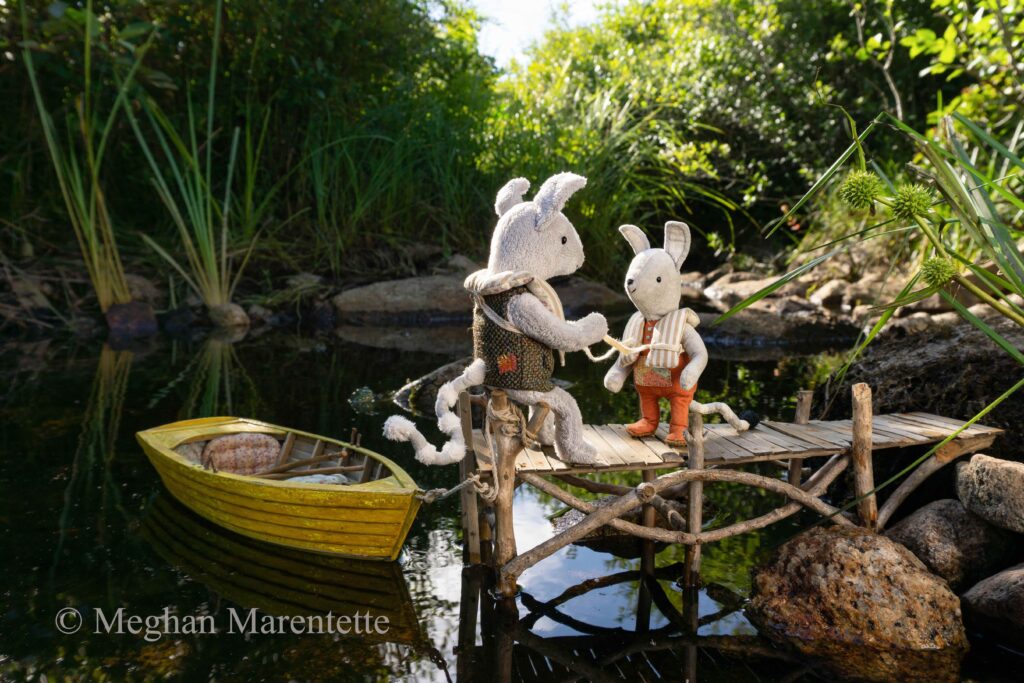
There’s a quality of wonder that your Rumie pictures capture so beautifully; something about the perspective and the scale that really bring out that ‘wonder-ful’ feeling of nature. Did you plan on that when you went to the forest to take your photos?
Not at first; I saw nature as only a pretty backdrop. But the more I got into my process, the more I saw the forest as a character itself, as important as Rumie or Uncle Hawthorne. To me, the wonder of the forest is its ability to nurture us through life, so I wanted to present nature as that nurturing character. Without pencils and paints, I had to use the tools nature provided (foliage, light, and water) to illustrate that ‘voice’. I did this in two ways:
First, I framed the characters with foliage and light in a way that reflects how the characters think and feel. For example, in the shot below, the explosions of grasses and bursts of light mimic the ‘fireworks’ of an idea forming in Rumie’s mind, and the reflection in the water is nature’s way of saying “I see you and your wonderful idea!” In that way, nature engages with Rumie.
Second, I take all my shots at ground level, lying in the mud or water with my camera, so the reader can see the forest the way the characters see it. On that close-up scale, we notice more easily how the forest weaves itself together in perfect harmony. There’s an ultimate benevolence in that―where each species and resource (water, rock and wood) has an important role in a common goal of thriving. I think that’s why so many of us seek out nature when we feel lost―nature is a living, breathing entity who makes the ultimate sense, cradling us in empathy with absolutely no judgment. She just makes room, accepts us, and reflects us back to ourselves. There is truly a wonder in that.
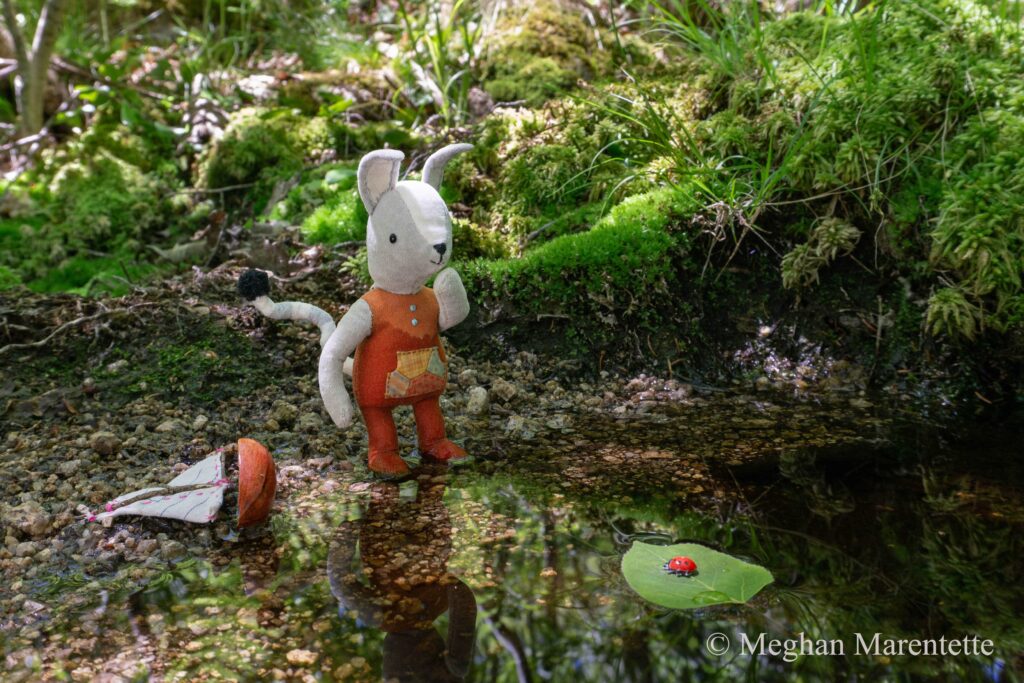
How much of a fixed idea do you take out into nature, and how much do you let the spontaneity of nature guide what you’re doing?
I go to the forest with a mental sketch of how I want a scene to look, but remain open to what nature offers that day. In this way, my process informs the stories I write. Once I find a location for a scene that has the potential to convey the emotion or action I want, I lie down on the ground at Rumie’s level and take hundreds of shots from different angles, until my eye lands on the right framing and pose of the puppet. But as the sun and clouds keep moving, I often lose the light and have to come back another day to get the actual shot. The forest is also constantly changing, so by the time I’ve got the right light again, the water might be too low and the mushrooms disintegrated. It’s a patient process, and one that has brought me in tune with nature. When the forest is dry, I feel dry. When it rains, I feel refreshed. That feeling comes through in the text and story: “Rumie roamed the forest floor, looking for curious things. The scent of dew filled the air and the moss squished underfoot. Everything smelled like fresh adventure.” From there, Rumie laments the lack of rain, as it’s preventing a trip in Uncle’s big boat…which leads to the building of a raft and unplanned adventure that ends in a revelation. The story is really a metaphoric tale of my own creative journey, which was completely guided by nature.
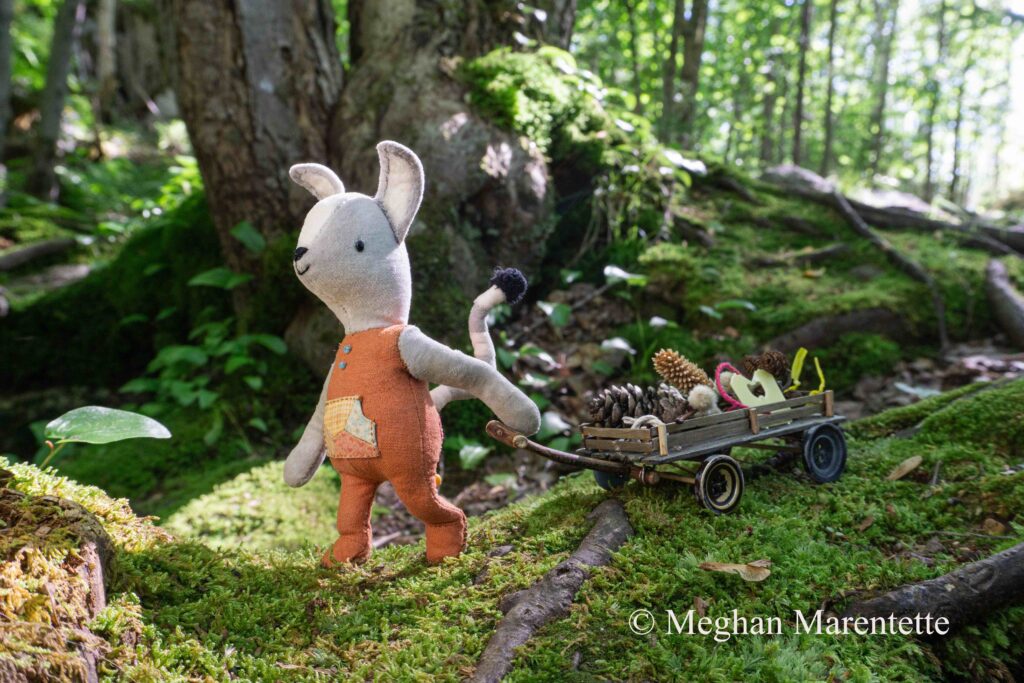
Will Rumie go on more adventures in nature?
Yes! The next story is set in winter. There will be more interior sets in this one, as part of the joy of winter is being cozy indoors, but many scenes are set in snow. The cold brings new challenges since I can’t be outside for hours at a time with my fingers exposed, but the biggest issue is climate change. I need fresh snow for the photos to look magical, and the winters are so warm now, we don’t get many snowfalls. I used to feel sad in winter without the colour green, but now I deeply feel winter’s importance. Nature needs a rest under a blanket of snow for the protection necessary to create a healthy spring―and I need it for my creativity, too. When I run outside to capture the perfect snow swirling amongst the trees and over Rumie’s head, I know the forest is also feeling that jubilation of living!

We’re so grateful to Meghan for sharing her story, and her perspective on art and nature. You can learn more about Meghan and her work, plus see even more photos of her process (in the studio and on location in the Purcells Cove Backlands), on her website or on Instagram.
If you are an artist and would like to share the story of how nature influences your art, please reach out to us at nature@nsnt.ca!

